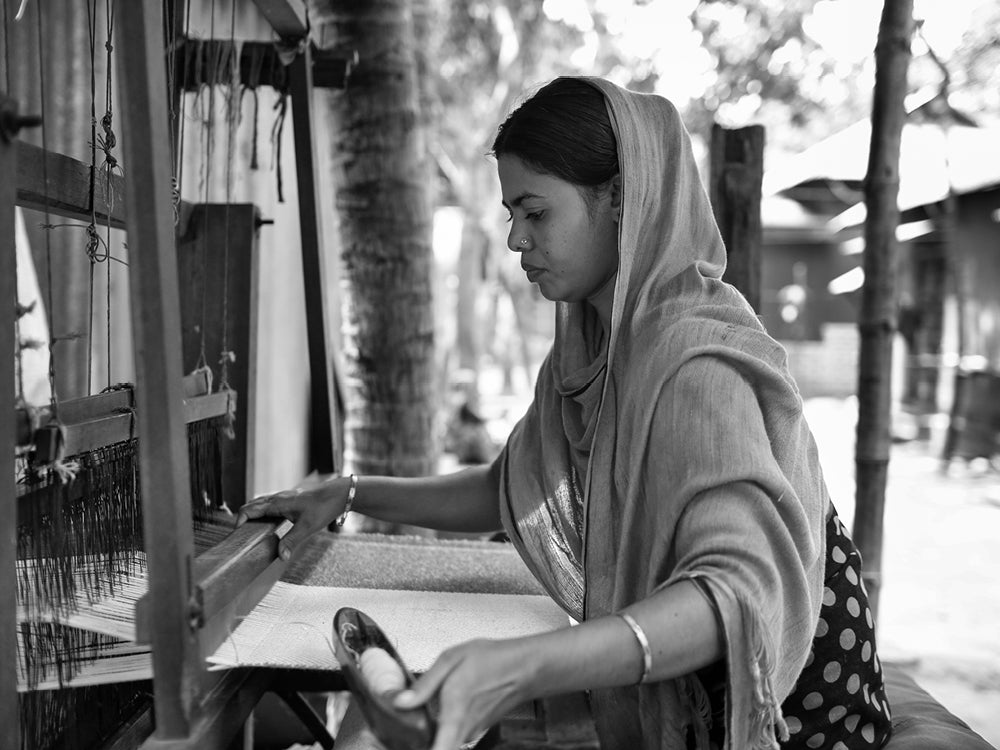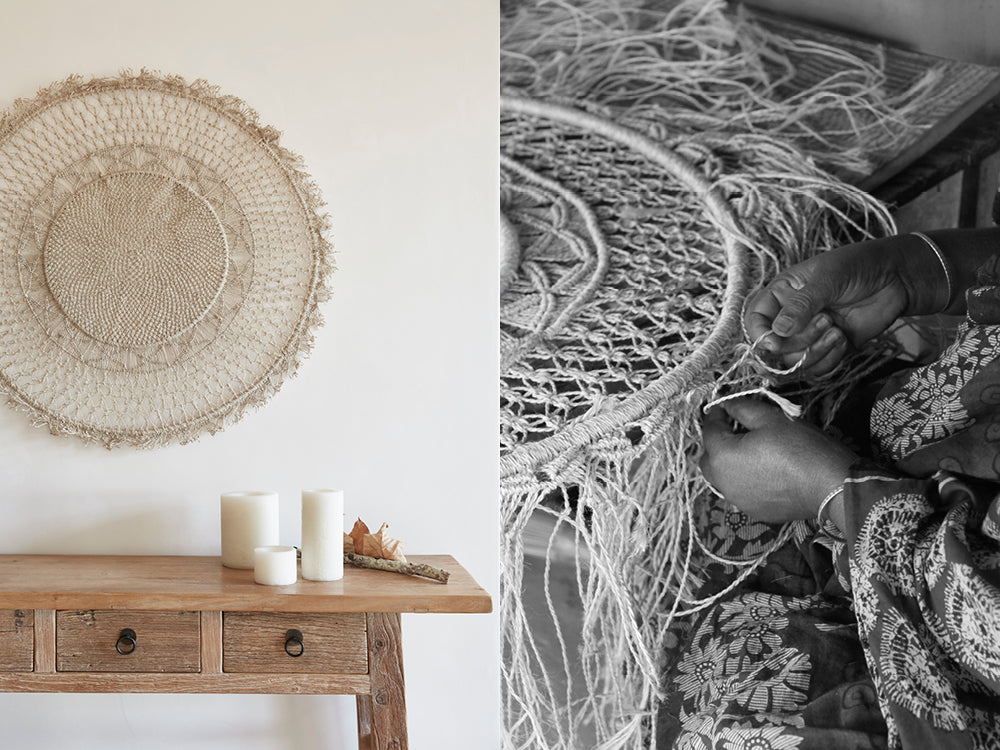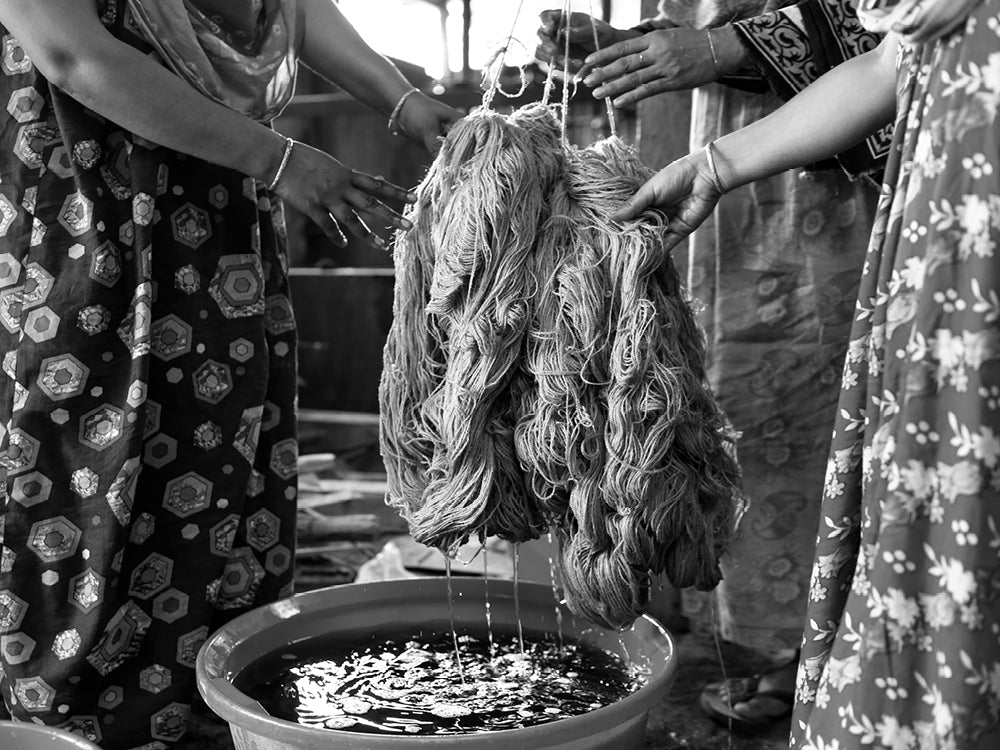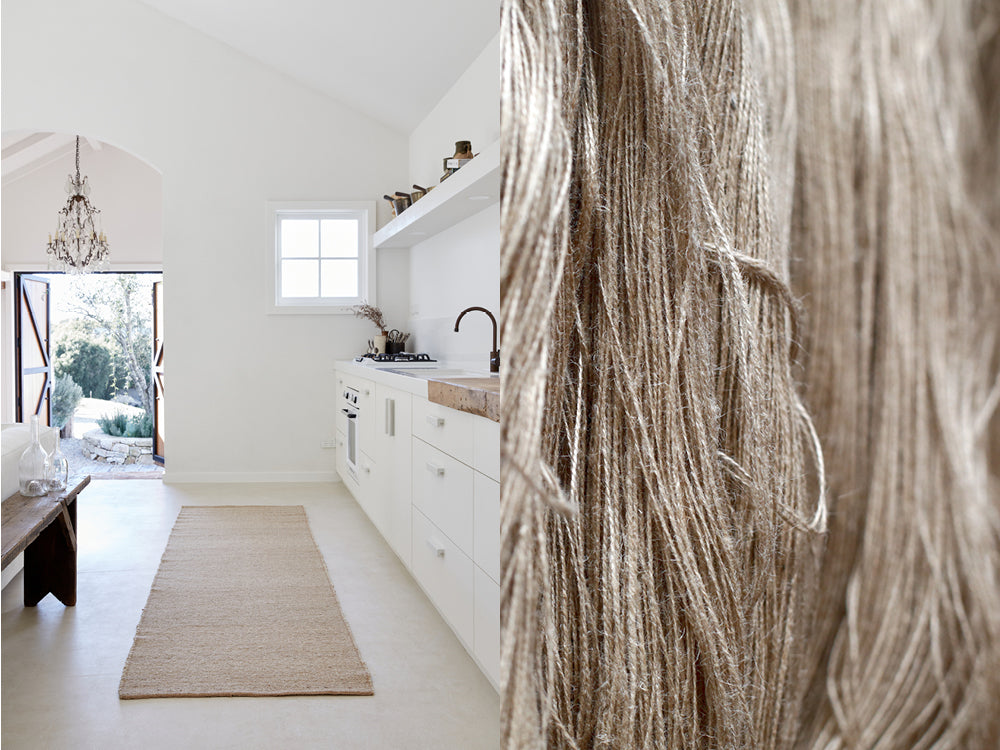Your Cart is Empty
The artisans who craft The Dharma Door products have always been our focus. Since 2004, our approach has been influenced by a desire to empower as many people as possible out of the cycle of poverty, so these women and their communities are also at the core of our design process.
Founder Shannon Sheedy designs and curates our collection in-house from her home studio in the Byron Bay hinterland. She works closely with our long-standing not-for-profit NGO partners to create products that play to the strengths of each maker and the natural materials that are readily available to them. Where other brands might start with a concept and commission agents to source and sample it specifically, Shannon begins with known artisan skills. This awareness has grown during regular visits to artisan communities where Shannon has observed the skills and materials artisans use day to day, as well as those practiced as part of their cultural heritage.
When designing, she pairs this exploration with an understanding of what works well in people's homes and her own style preferences. A process of sampling ensues where key criteria are met, prices agreed and artisans trained on the key quality points for each item. Here Shannon shares a little more about her design process and how she considers both people and planet at every step.

Every design must always tick several boxes: the right aesthetic; high quality; functional; ethically made; crafted from natural, locally-grown fibres; support handcrafted techniques; environmentally sustainable and it must be a design that the artisans can make repeatedly, ideally over many years.
These design parameters – which may seem limiting to some – have greatly helped to refine our style, collections and brand over time. I couldn’t do any of this without our Fair Trade partner groups – who I rely on to translate our designs and support and train the artisans through the sampling and production process.
The Dharma Door aesthetic is natural and textural with a neutral colour palette. The natural fibres and practical nature of our products are honest, relaxed and grounded. Our brand aesthetic has evolved organically over the years as I’ve gained a better understanding of the abilities of our artisan partners and the materials they work with. I also find inspiration while in the artisans villages - whether it be a woven mat on the floor, a thatched roof, a mud wall or a fence woven from palm leaves - these elements will often find their way into our collection and influence our overall aesthetic. My personal style has developed and matured during this time, while we're always keeping a close eye on what our customers respond well to.

I’m drawn to spaces or environments that feel grounded and calming. This feeling can be achieved in any home by keeping the palette neutral and layering textures in similar tones. The special quality of natural fibres and woven textures is how they work so well with one another and compliment a broad range of decor styles.
In our home I like to pair our pieces - blonde jute baskets, wallhangings and rugs - with a white palette, natural materials like timber and rattan and textural wall finishes of painted brick and rendered surfaces. Layering with linen and handwoven textiles that I’ve collected on our travels creates warmth and I’ve always enjoyed bringing foraged pieces from nature into our home. Whether it be a large palm frond, driftwood or a collection of seed pods, nature is an affordable way to add interest and individuality to a space and helps to create an earthiness that I love.
There’s an authenticity and beauty to natural materials and handcrafted textures that can’t be replicated. I appreciate the unique nature of the materials that we choose to work with such as jute, hemp, seagrass, palm leaves and banana fibre. No two strands of fibre are the same which makes each and every piece individual and imperfect in a beautiful way.
I initially started designing with these materials because I am naturally drawn to them, but more importantly because they are what the artisans are familiar with. Our artisan partners know and use these materials daily in their own homes, or have been crafting with them for generations, so it makes sense to work with their existing skills and knowledge to create our collections. The simplicity and modesty of natural fibres add texture, warmth and character to a space and help to create the relaxed vibe that I like to create in my own surroundings.

My vision is for people to be able to enjoy and use our pieces in their homes every day so I have always aimed to design pieces that are both timeless and functional. We want our products to be an active part of their owner’s life, whether they use a jute basket daily for toy storage or laundry, a hemp washcloth in the bathroom or appreciate the tactile and acoustic benefits of one of our wall hangings on their wall.
Functionality is a natural extension of the origins of our pieces. Our artisans make baskets, mats and utensils for themselves for everyday use and similarly it’s important that our products have an intended purpose. There’s something special about bringing an object that has been handcrafted by an artisan in her village home in Bangladesh across the seas and knowing that it will be appreciated in a home on the other side of the world.
Because each piece in our collection is handcrafted with natural fibres, by people working in their own homes in small rural villages, attaining perfection or exactly replicating every item is unrealistic. The imperfections and quirks that are a natural part of handmade production are also part of the beauty of our pieces. It doesn’t matter to us if one woman is hand-twisting jute twine slightly thicker than her neighbour or sister, or if another woman’s macrame weave is slightly more open than another’s. This honours their individuality and means every piece in our collection bears the mark of it's maker, even if it's in a small way.
Having said that, our expectations regarding quality are very high. From the product design and selection of the raw materials, through to the crafting process, and the specific detail of how to attach our labelling and pack our products. These are all discussed at length and specified before production begins. We rely heavily on our NGO partners, who support and communicate with the artisans to translate our quality expectations, especially around consistency, during the crafting process.

I personally like to choose and invest in quality, especially for our home. I have a natural appreciation for things that are well made and the skill involved with true craftsmanship. As advocates for conscious consumerism, we actively try to avoid waste in all forms by choosing quality pieces and finishes.
Naturally, we apply these values to everything we do at The Dharma Door. During the design process. I’m always thinking about the longevity of our products. Each piece is well-considered, created with intention and must have a timeless quality from a design perspective. More importantly, it needs to be able to stand the test of time and day-to-day life from a quality perspective. We want people to be proud of their Dharma Door investment and to display and use our products for many years in their homes.
While the aesthetic appeal of natural fibres is key to our designs, the environmental impacts are something I care deeply about. I request or select raw materials that are grown locally and pesticide-free within the regions where our products are made, which limits transportation of materials. Natural dyes and handcrafted techniques are used throughout our collections both for their beauty and minimal environmental impact.
Using sustainable materials naturally has positive benefits on the health and well-being of the artisans who make our products. They are also a much healthier option for all us to have in our homes. Ever mindful of the longer-term effects of our products, I consider how they will biodegrade when they are no longer required or have become unusable.

We are constantly inundated with mass-produced items that are made cheaply and have a sole focus on speed and profit. As a result, traditional crafts and hand making techniques around the world are slowly dying and there’s an incredible amount of skill, knowledge and cultural tradition being lost in the process and possibly forever. Talented artisans like spinners, weavers and dyers are also losing opportunities to earn an income and pass their skills onto the next generations.
Some of our products are crafted with age-old traditional weaving techniques and some are made with techniques, like macramé, that were introduced to the artisans 40-50 years ago and have been passed down through generations since. I personally feel a sense of responsibility to help keep these crafts alive and have a great deal of respect for the artisans and their skills. They are the backbone of the communities where our products are made. If we aren’t helping to build a demand for these crafts and providing artisans with regular work, many would need to move away from their villages to cities for work, creating migration and family separation issues. When artisans are able to practice their crafts in their homes or community weaving centres, this helps to protect family and community life along with their traditions. There is also a knock-on benefit of providing agricultural work for people who are farming and harvesting the raw materials for these artisan communities.
It’s been heartening to see a shift towards a greater appreciation for slow production and handcrafted techniques over recent years. Artisanal crafts that tell a story, that carry the mark of the maker or are crafted with unique materials add layers of warmth and interest to our homes. Each piece in our collection is crafted with special techniques - hand spun hemp, hand twisted jute, natural dyes and handwoven textiles - that bring qualities and characteristics that cannot be replicated through machine or mass production. It feels good to know we are providing fairly paid work for small-scale artisans - it's not only their livelihood, it is also empowering for them to know their skills are valued and have a future.

Our relationship with the artisans is a true partnership and I consider them at every step. From the design concept through to production and the effects on them post-production, the artisans are central to every design. I learned early on that the best way to design our pieces is to truly understand what materials and skills the artisans know and practice everyday.
I always take the time to visit artisans in their communities and gain an understanding of how they work and live before I design new products. This is often where seeds of inspiration is sewn too! My designs work with their capabilities so I’m not placing unrealistic expectations on them to create something that is too foreign to them or beyond their scope of experience.
The health and wellbeing of our artisan partners and their communities is also an important component of our design process. They are integral to what we do and I’m acutely aware that without them, we wouldn’t have any products in our collection. It’s important to know that they are safe and healthy and that their villages are not being negatively impacted by us or our products. That’s one of the reasons we choose natural dyes instead of synthetic dyes - we want to be sure we’re not polluting the environment where our artisans and their families live, play and work.

The Dharma Door is built on the vision of empowering as many people as possible out of the cycle of poverty, with a particular focus on marginalised women in developing countries. Good design is at the heart of this vision. We aim to achieve our goal by designing products that are aesthetically beautiful, timeless, functional and that the artisans can make repeatedly, to the highest quality. It’s no easy feat!
We have come to understand the challenges the women face on a daily basis - from climate to financial and societal - and do everything we can to meet our commitment to them. After working with thousands of artisans and the NGOs that support them for almost twenty years, they equally understand our expectations and always strive to do their best work, making sure they honour our designs and that every twist, knot, plait and stitch will last for a long time.
Ultimately, they know that it’s in their interest to make our products to the highest possible standard so that we are able to continue placing orders with them for many years to come. Knowing they will be receiving ongoing, regular orders and fair prices for their skills provides reassurance and much-needed financial stability that these talented women would not otherwise have access to.

Comments will be approved before showing up.
